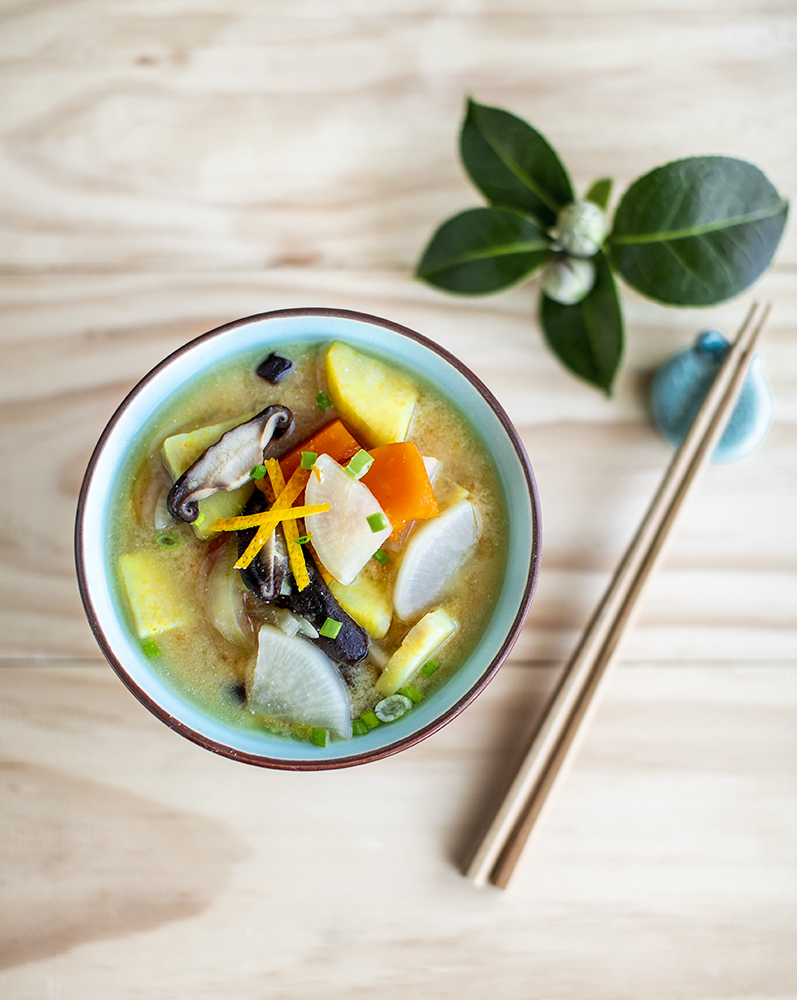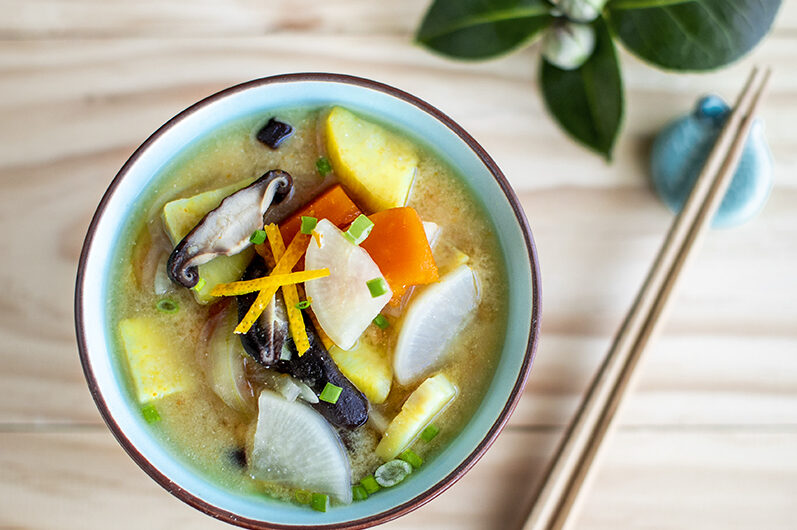
When traveling in Japan I noticed how widely a fermented food presented in Japanese cuisine. I also noticed that people in Japan love to eat, they eat a lot (I’m not surprised, the food in Japan is amazing), but stay healthy and fit. So what is the secret?
I guess, one of the secrets is fermented foods and digestive enzymes in it. Digestive enzymes are necessary for digesting process, as they break down molecules like fats, proteins and carbs into even smaller molecules that can be easily absorbed by the body. Enzymes are also made in the small intestine, but if the body is unable to make enough digestive enzymes, food molecules cannot be digested properly. This can lead to digestive disorders. Thus, eating foods that are high in natural digestive enzymes can help improve digestion.
Miso soup is important part of Japanese cuisine and a staple at nearly any breakfast, lunch or dinner. Miso soup is usually consumed as appetizer in a small bowl but it can be a main hearty dish as well. It preheats your body and prepares you for the main meal.
Miso soup is made from base ingredients of miso paste and dashi. There are many types of miso from different regions in Japan. Ingredients in miso soup can be vary depending of seasons, regions and recipes. Of course, miso soup made from scratch is the best! On the photo is one of my favorite miso soup recipes, this is Hokkaido-style hearty salmon miso soup. Thank you Taka-san for sending me this recipe.

Yuzu season is finally here and my friend Neville from NZ Yuzu sent me some flavourful organic fruits. I added yuzu rind to the soup and it tastes divine.
To prepare miso soup right way, cook vegetables, protein and mushrooms in dashi stock until soft, then add tofu (if needed) and cook for few minutes more. Chill the soup slightly (60C). Dissolve miso paste in a small separate bowl of soup, then return it to the soup pot, mix gently. Ratio: 1 Tbs miso for each cup of soup. Never boil soup with miso paste, the probiotic culture in unpasteurized miso has to stay alive. Unpasteurized miso is the best, it’s a “living food” containing natural digestive enzymes.
As you probably know I’m a huge fan of fermented foods. This winter I’ve decided to add more fermented food to my diet, and consume miso soup and pickled vegetables on a regular basis, as people in Japan usually do. And I really feel the difference and feel better in general now. I also found out that to make Japanese traditional style lunch or dinner is much more easier than it looks.
Hearty winter vegetable miso soup (vegan).
You can serve this delicious and nutritious miso soup as a main dish or as part of your Ichiju Sansai (one soup, three dishes, see my Instagram posts).
Sweet and hearty winter vegetables are so delicious in miso broth. They also are great source of fibre.
The Power of Miso Soup. + Hearty winter Vegetable Miso Soup Vegan Recipe
Course: Appetizers, Main, Soups, VeganCuisine: JapaneseDifficulty: Easy2-3
servings10
minutes15
minutesYou can serve this delicious and nutritious miso soup as a main dish or as part of your Ichiju Sansai (one soup, three dishes).
Sweet and hearty winter vegetables are so delicious in miso broth. They also are great source of fibre.
Ingredients
3 dried shiitake mushrooms, soaked for 3 hours in 1L of room temperature water
1/3 large Daikon radish
1/3 large red kumara (sweet potato)
1/4 small butternut squash
1/2 brown onion
zest of half yuzu citrus, + some to garnish
1 Tbs cooking sake (optional)
4 Tbs miso paste
chopped spring onion to serve
Directions
- Prepare all the vegetables: peel and cut into bite size chunks.
- Squeeze out all the liquid from the mushrooms. Transfer the shiitake water (shiitake dashi) to a saucepan. Cut off the mushrooms stems and discard. Slice shiitake into bite size chunks.
- Bring dashi to a boil, add pumpkin, kumara, daikon, mushrooms and yuzu zest. Close the saucepan with a lid, simmer slowly until vegetables are almost ready (don’t let them have rapid boiling and breaking apart). Add brown onion and sake, cook a few minutes more. Turn the heat off. Wait until temperature of soup is about 60C (to keep probiotics in miso alive). Place miso into sieve, plunge the sieve into soup and gently mix using a spoon until all the miso paste is dissolved.
- Divide the soup between bowls. Sprinkle the soup with spring onion and yuzu zest. Serve immediately. Enjoy!



